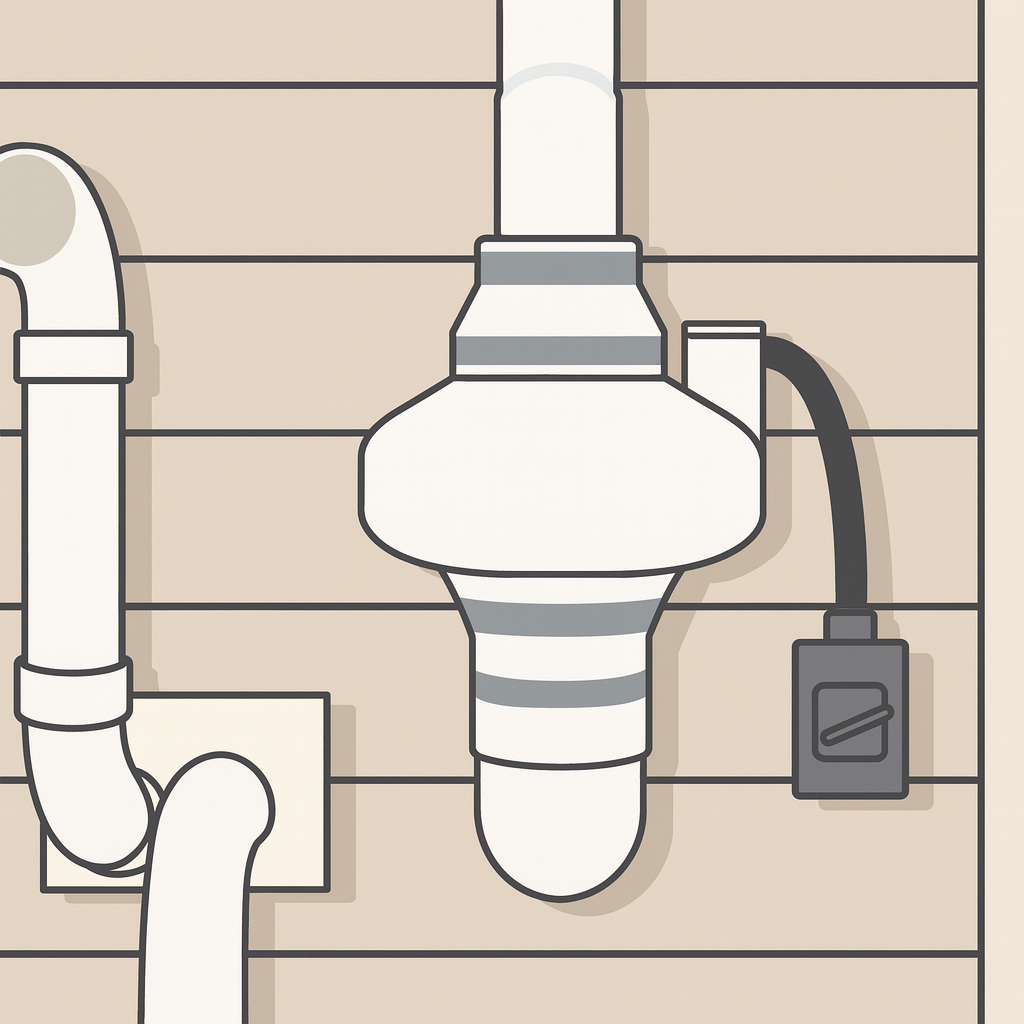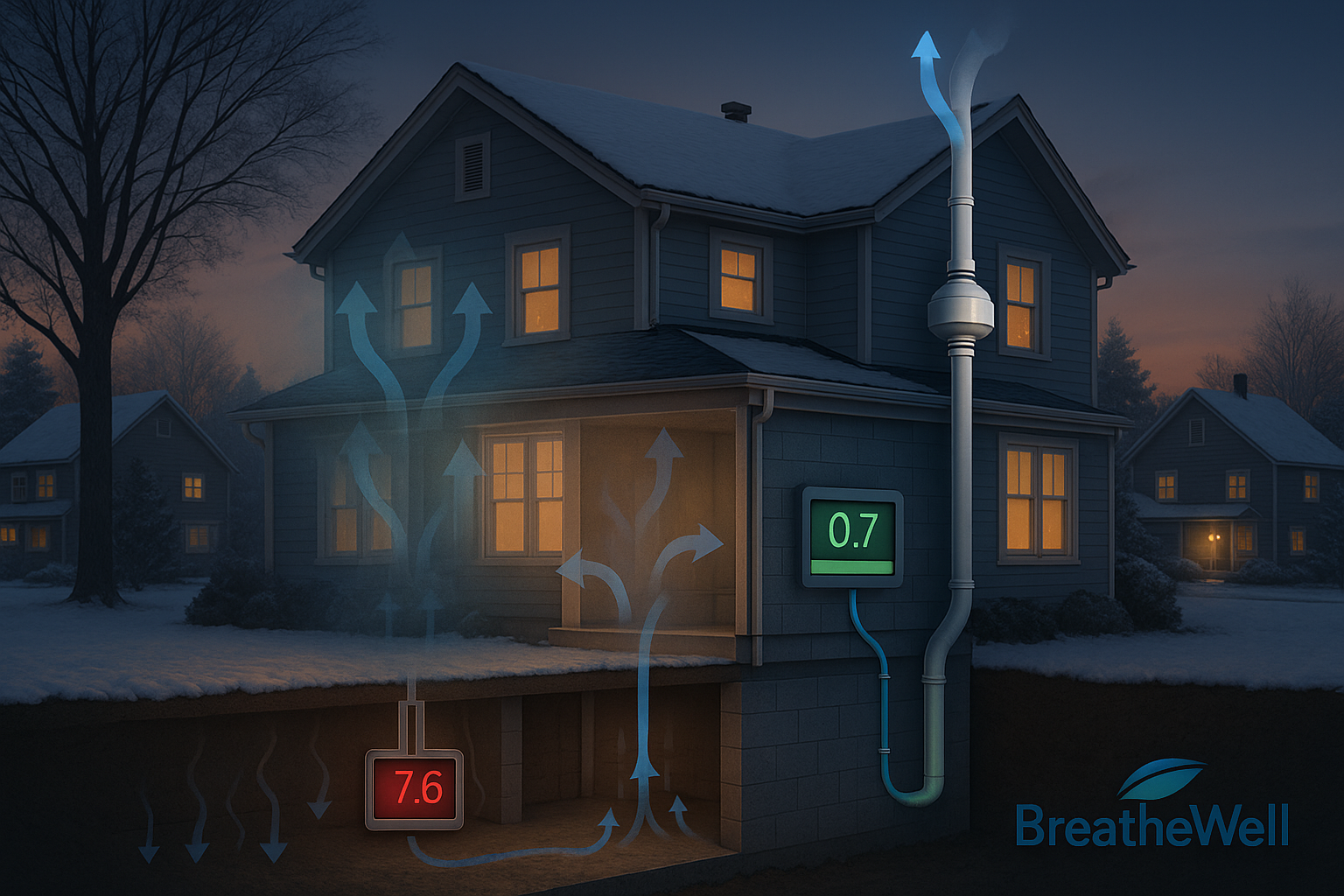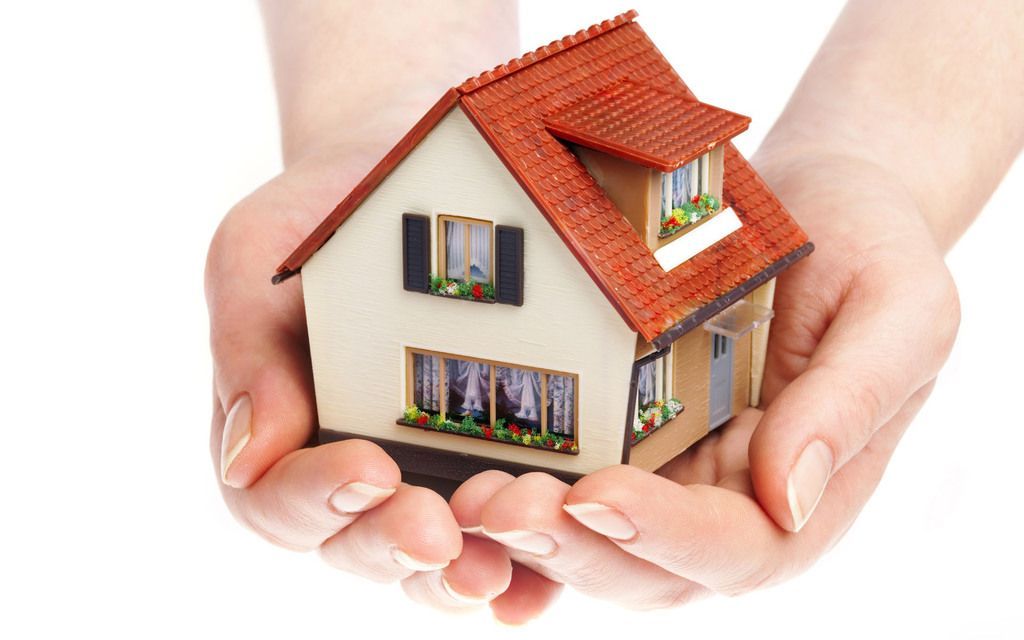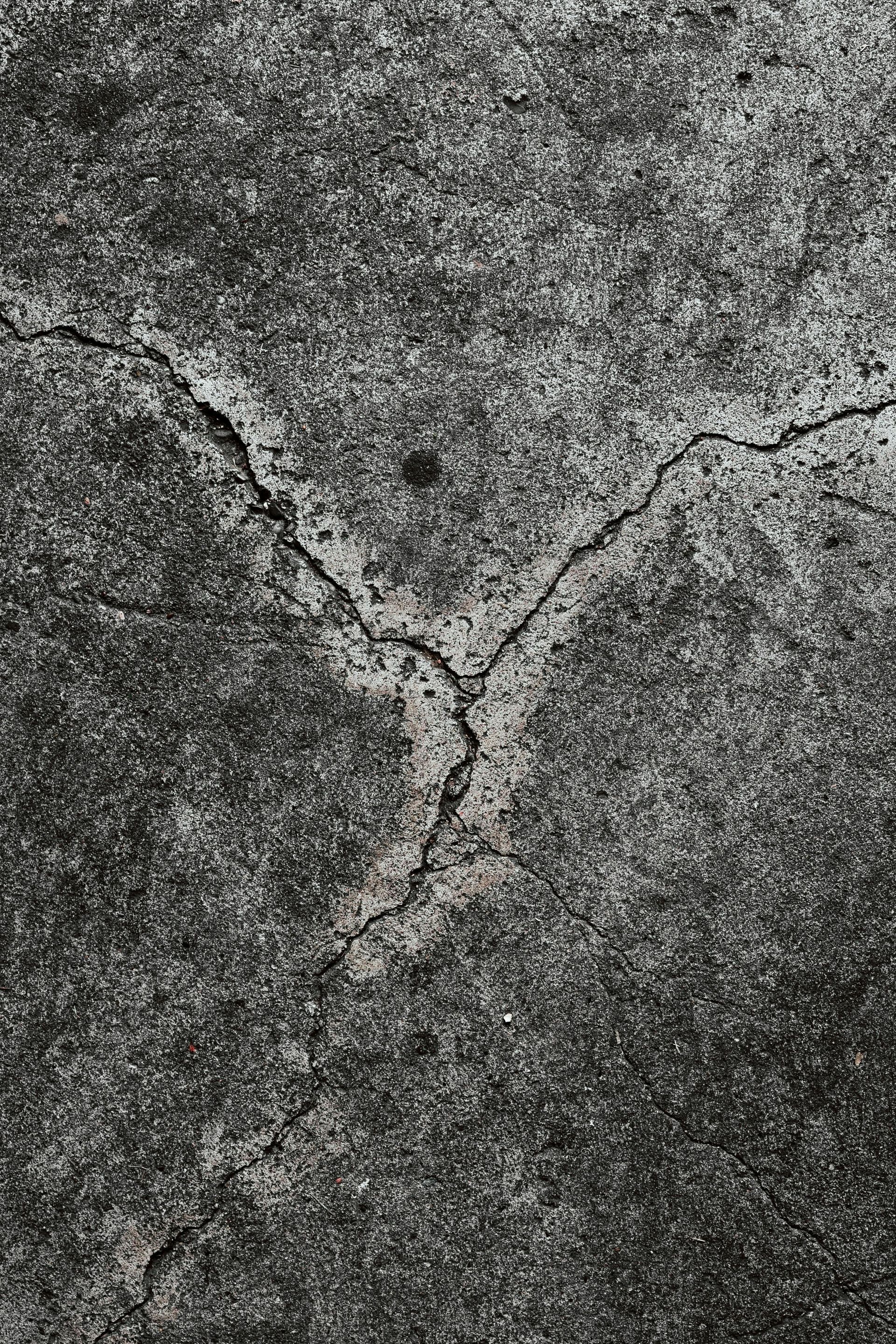BreatheWell Radon Solutions:
Protecting Madison WI Homes from Radon Gas
You can’t see it, smell it, or taste it — but radon gas may be present in your home right now. At BreatheWell Radon Solutions, we provide professional radon mitigation systems for homeowners across Madison and southern Wisconsin. Our goal is simple: reduce your radon levels, protect your family, and give you lasting peace of mind.
Understanding Radon
You can’t see it, smell it, or taste it — but radon gas may be present in your home right now.
At BreatheWell Radon Solutions, we provide professional radon mitigation systems for homeowners across Madison and southern Wisconsin. Our goal is simple: reduce your radon levels, protect your family, and give you lasting peace of mind.
The Health Risks of Radon
Radon is more than just a number — it’s a major health threat.
- It’s the #1 cause of lung cancer in non-smokers
- The #2 cause overall, second only to smoking
- Long-term exposure significantly increases risk, especially in homes with finished basements where families spend time
In Madison, radon is common, and ignoring it isn’t safe. The only permanent fix is professional mitigation.

How Radon Gets Into Madison Homes
Radon gas moves from the soil into your home through:
- Foundation cracks
- Basement floor drains
- Crawl spaces with exposed dirt
- Sump pits
- Gaps around pipes and wiring
- Porous concrete surfaces
Radon levels often rise during Wisconsin winters, when windows are sealed and ventilation is low — exactly when families spend the most time indoors.
Our Proven Mitigation Process
Here’s how BreatheWell protects Madison homes:
- Site Evaluation – We choose the most effective suction location and venting path.
- Suction Point Creation – A
PVC pipe is installed beneath the slab and sealed.
- Radon Fan Installation – A quiet, continuous fan draws radon out of the soil before it enters your home.
- Roofline Venting – Radon is vented above the roofline to disperse safely outdoors.
- System Monitoring – Every installation includes a monitor for simple visual confirmation.
Our installations are typically completed in a single day, providing long-term protection with minimal upkeep.
Why Madison Chooses BreatheWell
- Focused on Mitigation – We don’t dabble; we specialize in reducing radon.
- Wisconsin Knowledge – We know the soil conditions and housing styles in Dane County.
- Trusted Results – Our systems consistently lower radon below EPA action levels.
- Certified Installers –
Professionally trained and compliant with EPA guidelines.
- Built to Last – Fans and piping engineered for continuous, reliable operation.

Radon and Madison Real Estate
For buyers, radon testing is common in Dane County inspections. If elevated levels are discovered, mitigation is expected. For sellers, having a system in place can prevent deals from falling through and give your property a competitive edge.
Don’t Delay Mitigation
If testing has shown your Madison home has elevated radon levels, the next step is clear: mitigation. Every day you wait is another day of unnecessary exposure.
Call:
(608) 820-8394
Email:
breathewellmadison@gmail.com
Proudly serving Madison, Middleton, Sun Prairie, Fitchburg, Verona, Monona, Stoughton, Oregon, Waunakee, and communities across southern Wisconsin.
Breathe Well. Live Well.
Contact Us
More Information About Mitigation:
Frequently Asked Questions About Radon Mitigation In Madison Wisconsin
What is radon, and why should I test my home in Madison, WI?
Radon is a radioactive gas that forms naturally in the soil beneath your home. It is odorless, tasteless, and invisible, yet prolonged exposure can lead to lung cancer.
According to the Wisconsin Department of Health Services, much of Dane County — including Madison — is classified as Zone 1, meaning homes are high risk for elevated radon levels.
How does radon enter buildings?
Radon enters through gaps in the foundation, including:
-Cracks in slabs or basement walls
-Sump pump pits and utility penetrations
-Crawl spaces or exposed earth
-Construction joints or drain tile systems
Once inside, radon can build up to dangerous levels — especially in lower levels of a home. Older homes, and even new constructions, are at risk depending on the soil and ventilation.
Can I install a radon mitigation system myself?
While DIY radon mitigation kits are available at hardware stores or online, they often fall short of providing long-term protection — especially in high-risk areas. Proper radon mitigation requires more than just connecting a fan and pipe. It involves understanding your home's foundation, soil conditions, and air pressure dynamics. Most DIY systems lack the power, design, or placement needed to effectively reduce radon levels.
Improper installation can result in:
-Ineffective radon reduction
-Safety hazards due to poor venting
-Moisture problems or backdrafting
-Violations of local building code
Is Radon a Problem in This Area?
Yes — radon is a significant concern throughout Dane County and the surrounding areas in south-central Wisconsin. The region is classified as an EPA Zone 1, which means it has the highest potential for elevated indoor radon levels. In fact, studies by the Wisconsin Department of Health Services show that over 40% of homes tested in this region have radon levels above the EPA action threshold of 4.0 pCi/L.
What makes radon so unpredictable is that it varies widely from house to house — even between neighboring properties. Factors like soil composition, foundation type, ventilation systems, and home construction all influence radon levels. A home that tests safe today could test high after renovations, changes in HVAC systems, or natural ground shifts.
Is radon testing required during home sales?
While not mandatory in all real estate transactions, testing is strongly encouraged by real estate agents, lenders, and buyers — especially in high-risk regions. If elevated levels are found, mitigation is usually required before closing or negotiated into the sale.
Can sealing foundation cracks reduce radon?
Sealing helps reduce radon entry points but isn’t a standalone solution. Gas can enter through tiny pores and unsealed areas invisible to the eye. A fan-powered mitigation system is typically the only reliable method.














